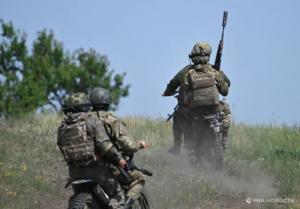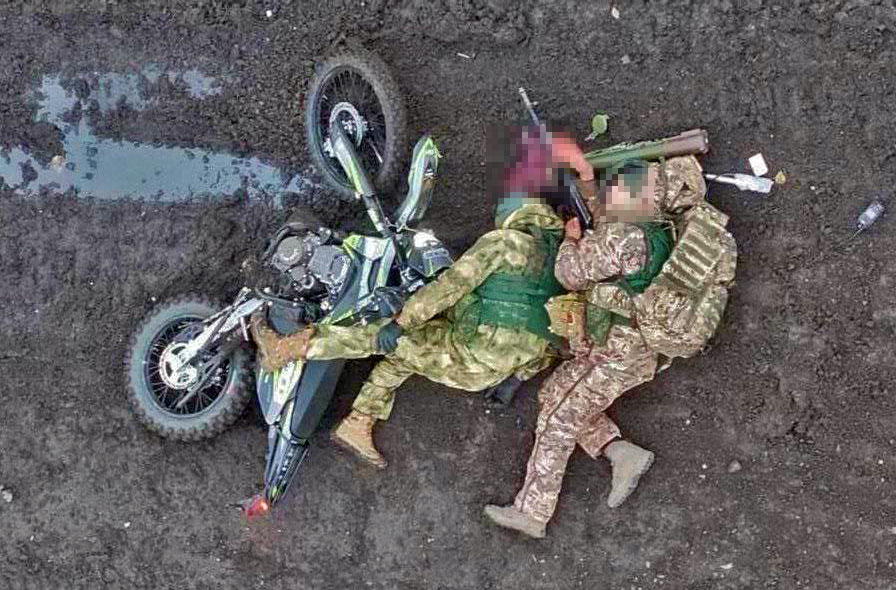Is Russia losing 30,000 troops a month as its wider war on Ukraine grinds into its 44th month?
Or is it losing more than that—50,000 a month … or even more?
As the Russians shove more and more regiments and brigades into the narrow salient northeast of the fortress city of Pokrovsk, their casualties are increasing.
Different sources disagree over exactly how much Russian casualties are increasing. They don’t disagree that more Russians are dying, getting maimed, or going missing, many of them in and around the chaotic, 40-square-kilometer salient.
Leaked documents reveal baseline Russian losses
A leaked Russian document provides a baseline for Russian losses between 1 January and 1 September this year. According to the document, Russian forces suffered 281,550 casualties in those 245 days:
- 86,744 killed in action
- 33,996 missing in action
- 158,529 wounded in action
- 2,311 captured
That’s 35,000 casualties a month through the early weeks of Russia’s renewed push toward Pokrovsk. Of those 35,000 casualties, several thousand were probably temporary as the more lightly wounded recuperated and returned to service.
Given that Russia recruited nearly 32,000 fresh troops a month over the same eight months, there’s a good chance the Kremlin enjoyed a small troop surplus throughout much of 2025.
But Russian commanders’ determination to capture Pokrovsk, one of the last urban strongpoints between the Russians and the free twin cities of Kramatorsk and Sloviansk, has erased that surplus. Now the Russians are almost certainly losing more troops than they’re recruiting every month.
It’s unclear how deep the deficit is, however.

September losses climb higher than Ukrainian estimates
Another leaked document, detailing Russian casualties for 4 September, lists 995 total casualties, around half of them from the Center Grouping of Forces fighting around Pokrovsk. Incredibly, this is a slightly higher count than the official Ukrainian count of Russian losses for the same day.
The Ukrainian general staff, which could be forgiven for projecting rosier figures, tallied just 810 Russian casualties on 4 September.
Pokrovsk offensive drives losses 18-20% higher
The casualty rate among Russian field armies has probably increased since then. “On the Pokrovsk direction, Russian troops activated attacks across the entire direction, suffering 18-to-20% greater losses over the last week,” the Ukrainian Center for Defense Strategies reported Wednesday.
If CDS is correct, the Russians are losing around 1,200 troops a day. If the typical ratios of killed to wounded to missing hold, 1,200 total casualties could mean 400 confirmed KIA a day. (Analysts widely assume most missing Russian soldiers are also dead somewhere along the 1,100-km front line.)
Trending Now
But at least one analyst has good reason to believe Russian losses are currently much greater.

Putin’s prized tanks go up in smoke after disastrous assault near Pokrovsk
Visual confirmation suggests actual deaths far exceed official counts
Analyst Andrew Perpetua visually confirmed 825 Russian KIA in five days starting on 9 October. That’s 165 dead Russians every day, on average.
But Perpetua stressed that his count is probably low, as there are surely many Russian combat deaths that don’t leave behind photographic or video evidence. Perpetua himself estimated he observes between 15% and 30% of Russian losses.
Being conservative, that could mean that Russia’s battlefield deaths are approaching 500 a day. Applying the usual ratios, that could mean 1,000 wounded and 250 missing. Again, most of the missing are probably dead.
Russia’s recruitment can’t keep pace with mounting casualties
That’s … a lot of dead, maimed, and missing Russians. Potentially 50,000 or more total casualties a month.
The problem for the Kremlin is that there’s no evidence it has boosted recruitment to match the deepening losses. If the Russian military is still adding 32,000 fresh troops a month, it’s likely running a manpower deficit of around 20,000 troops a month that it can’t replace.

ISW warns: Kremlin prepares to mobilize reservists without formal call‑up as its paid recruitment system collapses
Russian leaders are worried. “Moscow is facing increasing difficulties replenishing the ranks of its invading army,” Ukrainian-American war correspondent David Kirichenko wrote. The growing manpower deficit is evident in the extreme measures the Russians are taking to address it.
“With fewer Russians now prepared to volunteer, the Kremlin is seeking to recruit more foreign fighters,” Kirichenko pointed out. There’s recent evidence of Indians, Cubans and even Kenyans enlisting in the Russian armed forces.
“Russia is still a very long way from running out of soldiers,” Kirichenko stressed, “but Putin has no more easy options as he seeks to replenish his decimated invasion force and continue the war into a fifth year.”

